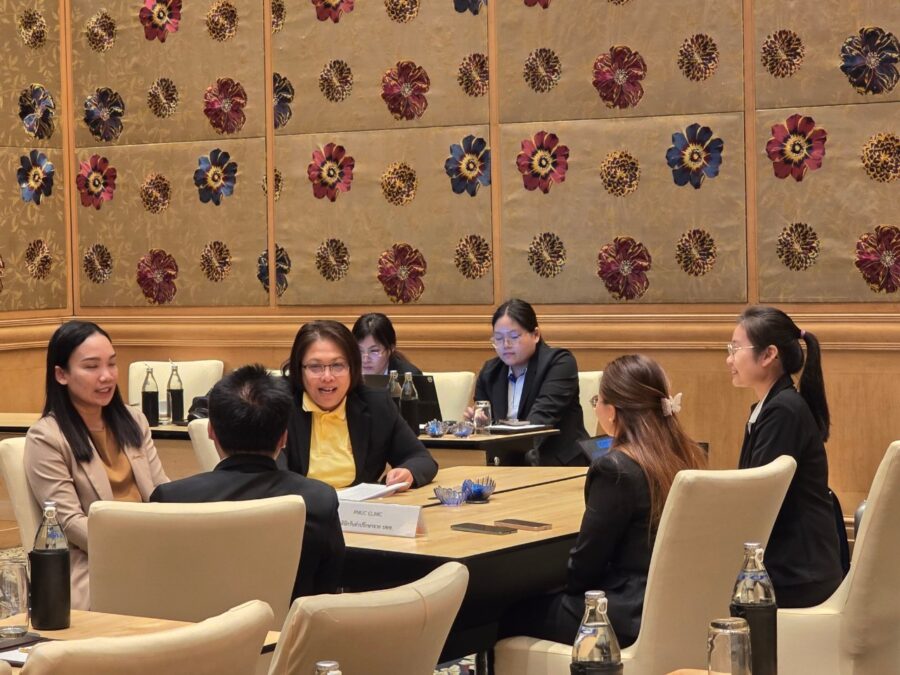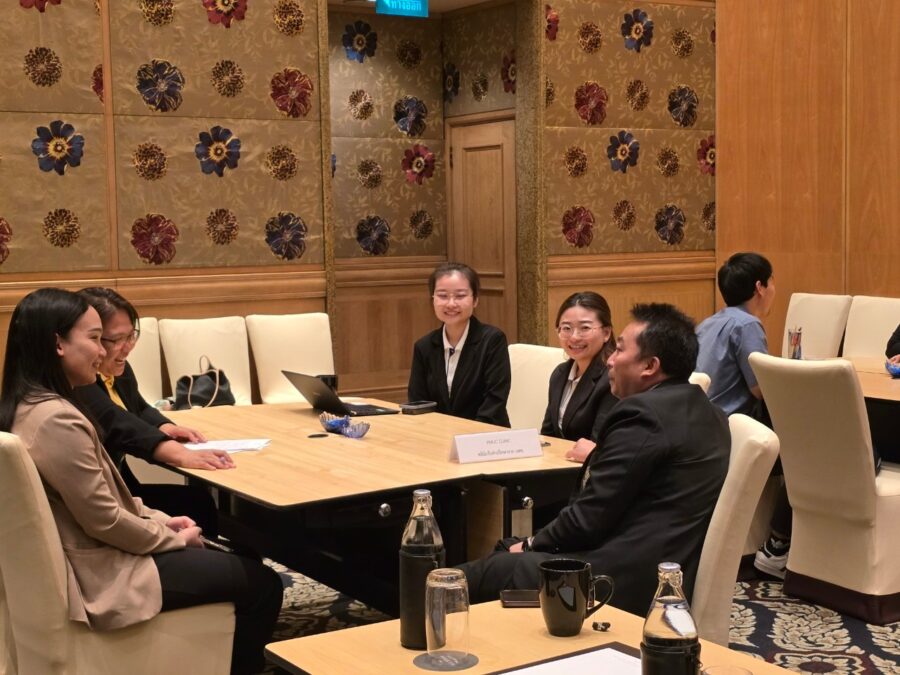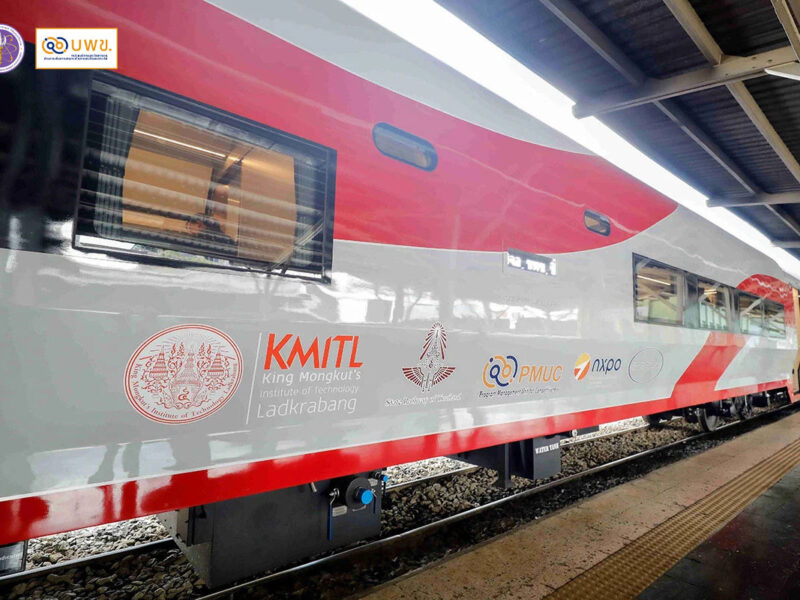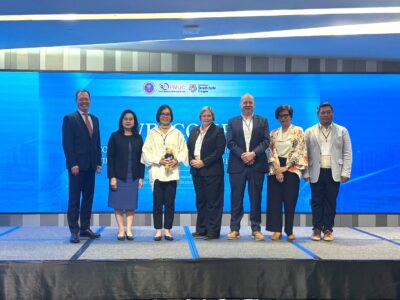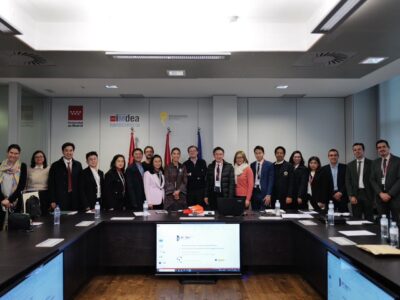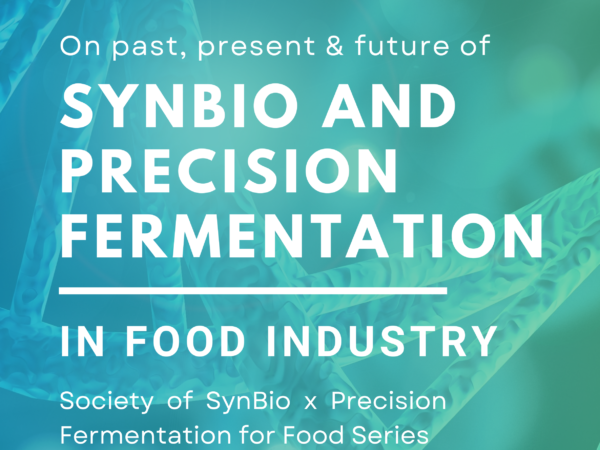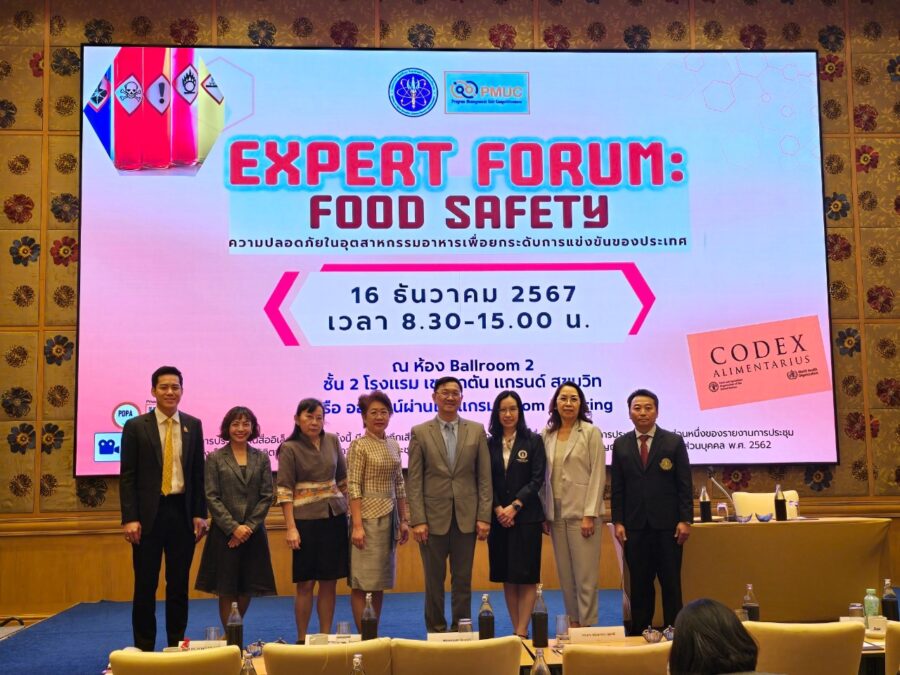
On December 16, 2024, at the Sheraton Grande Sukhumvit Hotel, the Program Management Unit Competitiveness (PMUC), under the High-Value Food Plan of the Ministry of Higher Education, Science, Research, and Innovation (MHESI), organized the “Expert Forum: Food Safety in the Food Industry to Enhance the Country’s Competitiveness.” The event aimed to establish research directions, gather expert and stakeholder input for developing research questions on food safety, and enhance the competitiveness of Thailand’s food industry.

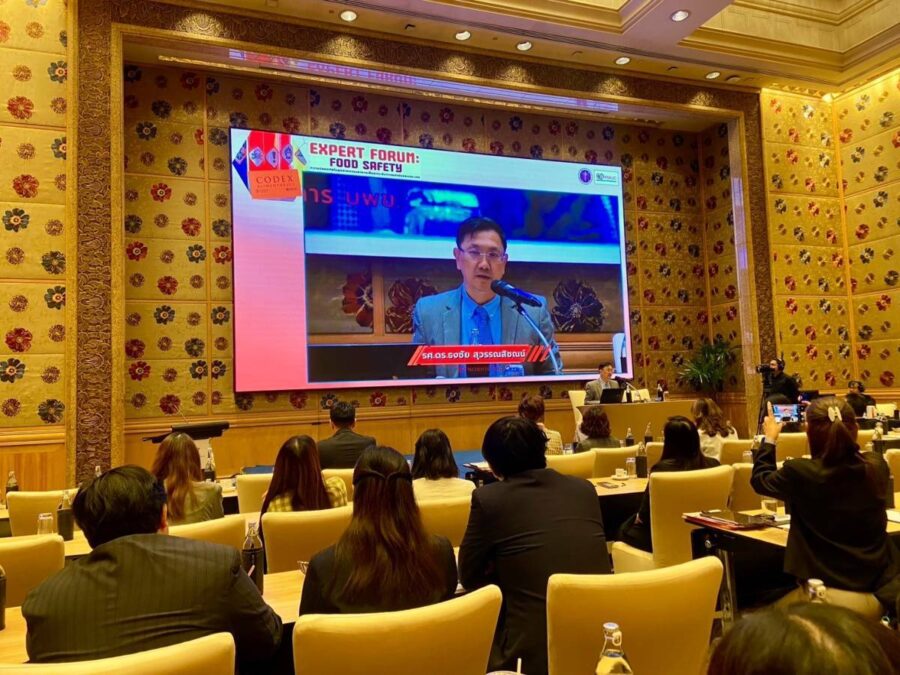
Assoc. Prof. Dr. Thongchai Suwonsichon, Director of PMUC, explained that PMUC serves as a research fund management agency under MHESI, tasked with boosting national competitiveness. RDSI focuses on eight target industries in which Thailand demonstrates strong potential, with “food” being one of the key sectors. The goal is to elevate food production to high-value status through research, technology, and innovation, thereby strengthening the country’s competitiveness. A key priority is developing processes and certification systems that meet international standards. These efforts aim to improve food quality and safety (Food Safety), facilitating the application of research findings in commercial production.

Assoc. Prof. Dr. Warapa Mahakarnchanakul, Director of the Research and Development Institute at Kasetsart University and a food safety expert, highlighted the critical role of food safety in enhancing national competitiveness. She noted that consumer concerns encompass microbial and chemical contamination, food adulteration, misuse of additives, improper labeling, and genetically modified organisms (GMOs).
Dr. Warapha emphasized that global factors significantly impact food safety, including climate change, water use and reuse, heightened environmental awareness, food adulteration, food security, and evolving consumer behavior. She stressed the importance of preparedness in addressing these challenges. For instance, global climate change influences the growth and spread of pathogens, necessitating risk monitoring and mitigation strategies. Effective measures are needed to minimize risks, waste, and food loss.
Regarding water management, industries must understand water reuse and recycling, adopt advanced water management technologies, and maintain stringent water quality checks. The adoption of circular economy principles encourages industries to focus on environmental sustainability, promoting practices such as reuse and managing plastic pollution. However, risks associated with inadequate assessment and control must be addressed, including unexpected hazards that require monitoring and risk analysis.
On the topics of food adulteration and security, implementing traceability systems and effectively communicating risks to consumers are crucial. Changing consumer preferences have also driven demand for nutritious, personalized food options, as well as increased interest in plant-based and insect-based proteins, and natural foods with minimal chemical usage. To meet these demands, the food industry must prioritize safety data and innovative ingredient analysis methods.

On the other hand, Dr. Sakranmanee Krajangwong, a specialist veterinarian from the Standards Office of the National Bureau of Agricultural Commodity and Food Standards (ACFS), discussed the international food safety standards outlined by Codex/WHO. She explained that Codex serves as a reference standard for the World Trade Organization, emphasizing consumer health while facilitating international trade. Notably, Codex is currently promoting the establishment of a global food safety network. There are four agencies providing risk assessment guidance for Codex standards: JECFA, JMPR, JEMRA, and JEMNU.
Meanwhile, the World Health Organization (WHO) plays a significant role in risk assessment by strengthening national food control systems and evaluating the burden of foodborne diseases. Efforts are underway to develop the International Food Safety Network (INFOSAN) and strengthen collaboration with the World Organization for Animal Health (WOAH). Reducing food contamination risks requires comprehensive action at every stage of the food chain, from farm production to human consumption.
Dr. Sakranmanee noted that many countries have adopted the One Health approach, emphasizing the protection of people, animals, plants, and the environment from pests and diseases. Food safety is a shared responsibility, requiring cooperation across various sectors, from food production to consumption. Thailand’s challenge in food safety research lies in promoting the integration of research with the One Health approach. This includes enhancing data connectivity for risk analysis, developing fast and accurate internationally recognized laboratory testing methods, applying research in industry to reduce production costs, fostering innovation, and encouraging researchers to contribute to setting both Thai and international food standards. It also involves effectively communicating risks to consumers.
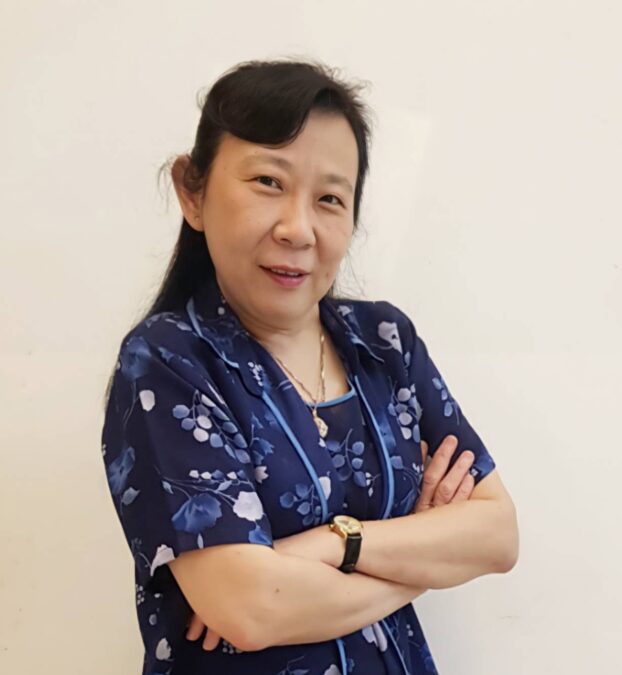
The meeting featured noteworthy topics, including “Preparing Thailand’s Food Safety Regulations for Competition” by Ms. Narumol Chartsanga, an expert in food safety from the Food Division of the Food and Drug Administration (FDA). She discussed the FDA’s efforts to protect consumers in the future society by promoting safe and healthy food choices, supporting entrepreneurs in driving the future food economy, accelerating the approval of innovative food products, developing networks, preparing for audits under the Mutual Recognition Agreement (MRA) on food production facilities (PF), and aligning food regulations with international standards.
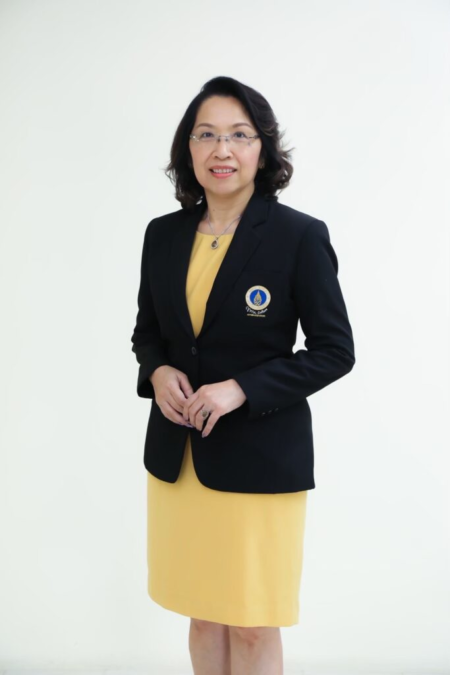
Another highlight was the presentation on “Contamination Risk Assessment to Enhance Food Safety in the Country” by Assoc. Prof. Dr. Chaniphun Butryee Head of the Thailand Food Risk Assessment Center (TRAC) at the Institute of Nutrition, Mahidol University. She elaborated on principles of risk assessment, hazard identification and characterization, exposure assessment, and provided examples of health risk assessments for heavy metals and pesticide residues.
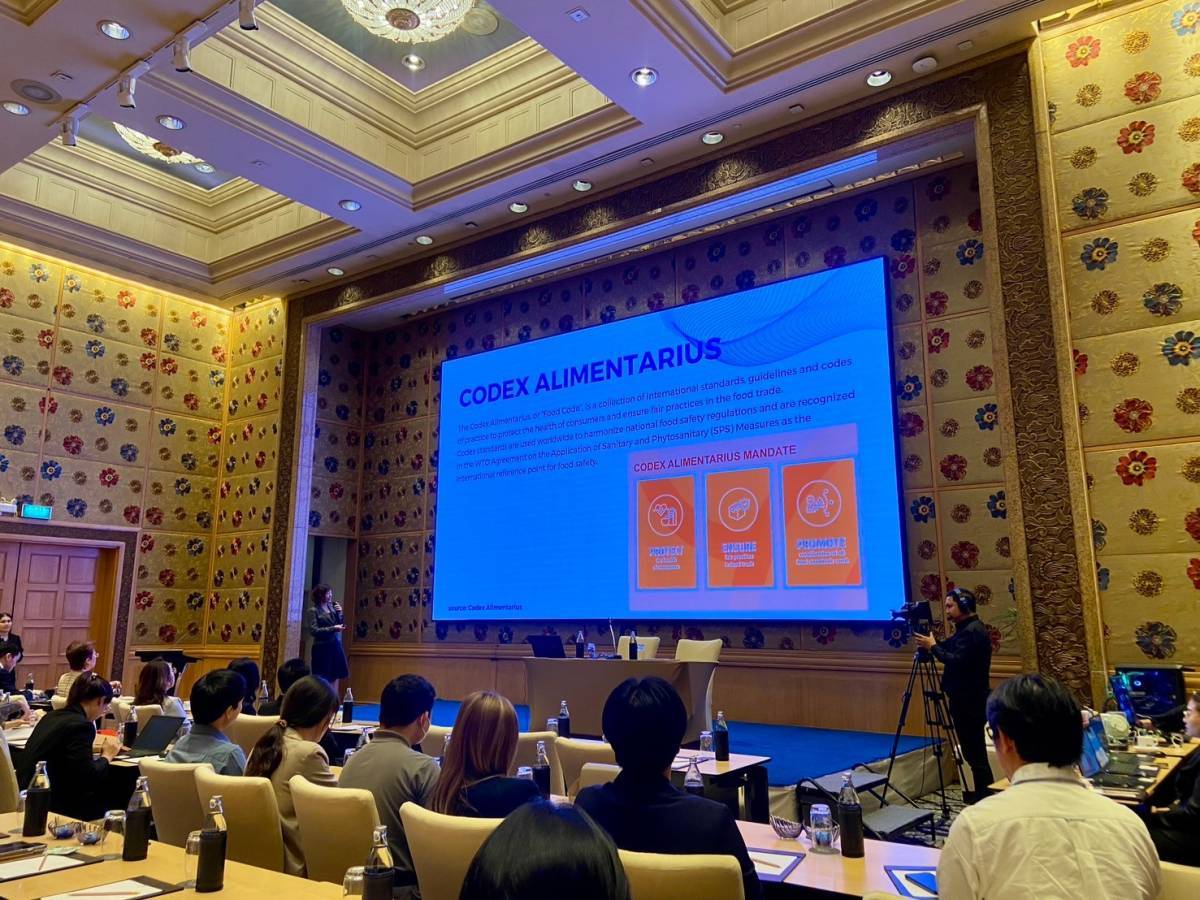
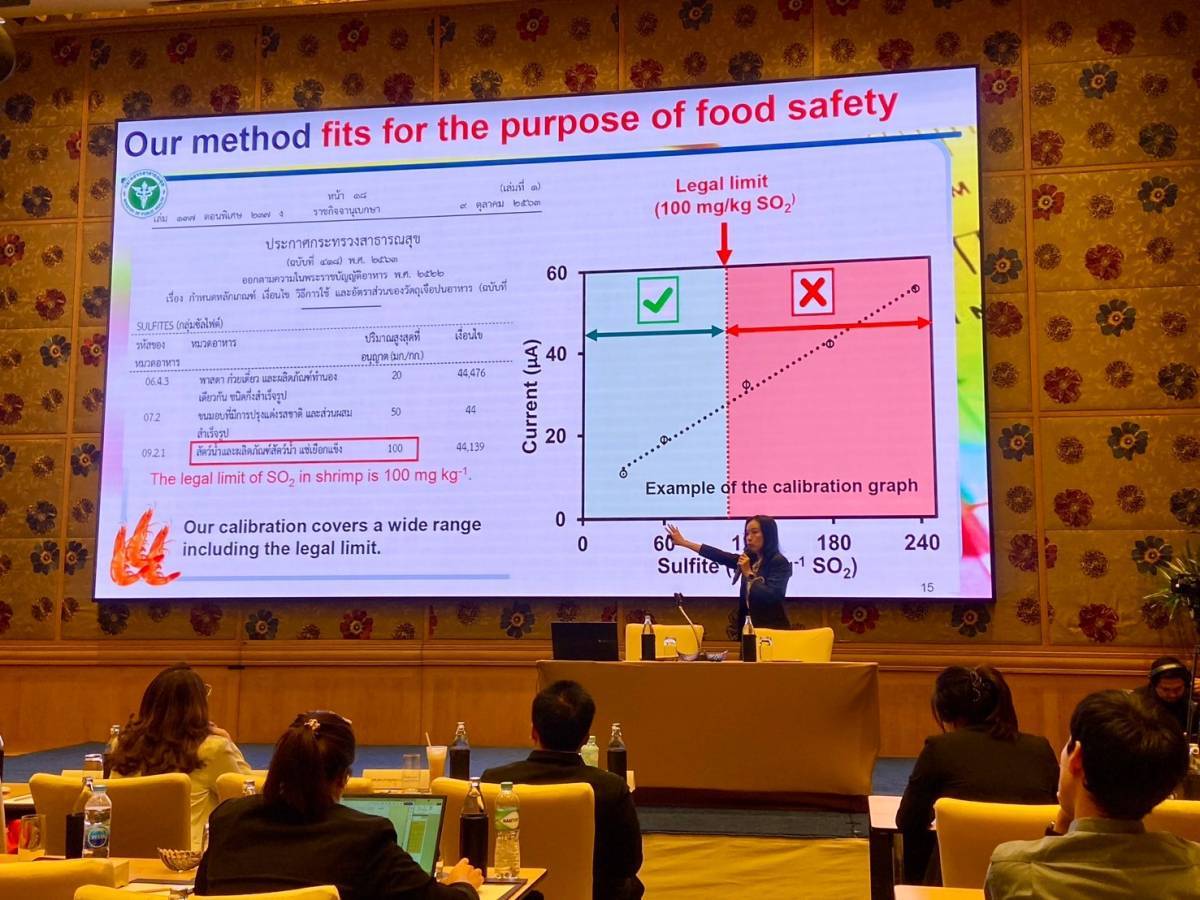
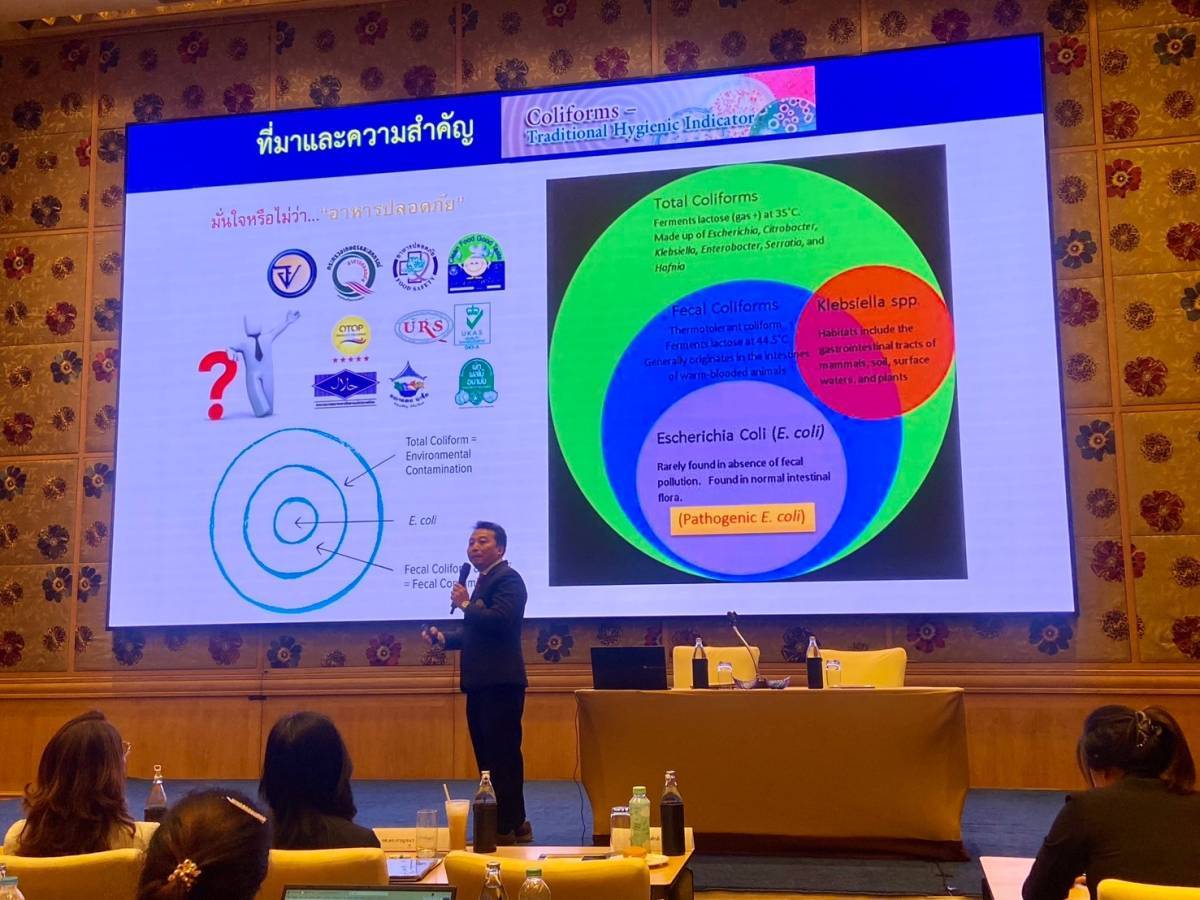
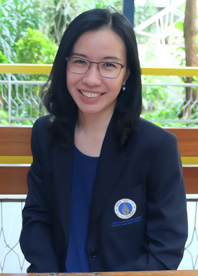
Examples of related research included the “Sulfite Sniffer V2023,” a sulfite residue sensor for shrimp and frozen seafood, developed by a research team led by Assoc. Prof. Dr. Kanchana Uraisin from the Department of Chemistry, Faculty of Science, Mahidol University. This device, designed to ensure compliance with domestic and international standards, uses “sniff technology” to detect vapor and delivers results within three minutes without requiring complex extraction steps. The sensor is durable, has a shelf life of at least one year, and does not need refrigeration before use. This innovation promises to enhance the quality of frozen food production and boost Thailand’s competitive edge, eliminating reliance on imported sulfite measurement devices.
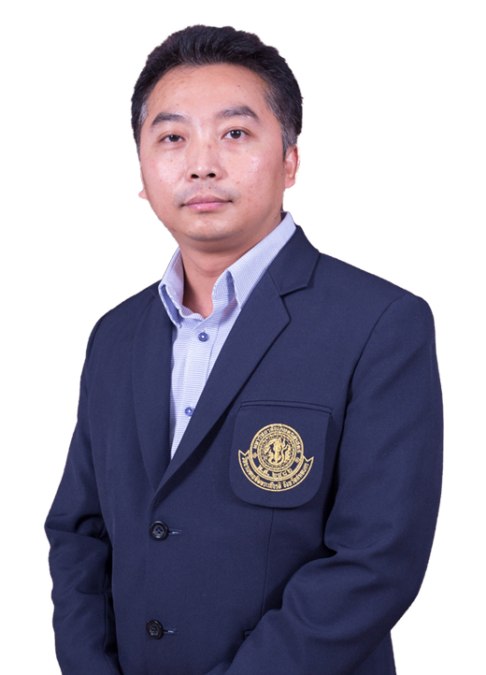
Another significant project was the development of a “COLI-2-in-1” test kit for detecting coliform and fecal coliform in food, water, and on food handlers’ hands. Led by Assoc. Prof. Dr. Anusak Kerdsin, Deputy Dean for Research at the Faculty of Public Health, Kasetsart University, the research team has achieved preliminary success and received positive feedback from users. However, to enable commercial production and ensure customer confidence, the test kit must meet ISO 16140-2:2016 standards and secure product certification from an independent agency such as TÜV SÜD.

Prof. Dr. Nathdanai Harnkarnsujarit, Manager of the High-Value Food Research Coordination Office, PMUC, summarized the guidelines for promoting and developing research aimed at enhancing safety in the food industry. He emphasized the importance of conducting research on standards and quality inspection technologies, such as real-time analysis and user-friendly quality inspection tools. These include methods for detecting toxins, allergens, agricultural residues, and microorganisms, as well as developing tools to manage risks associated with raw materials and contaminants.
He also highlighted the need to establish a Positive List based on scientific evidence, set criteria for products included in national policies or strategies, and develop laboratory testing methods that are fast, accurate, and internationally certified.
Furthermore, he stressed the importance of promoting research integration to support food safety through the One Health Approach. This approach involves collaboration among various agencies to connect data and establish national food safety quality and standards. He also encouraged the use of research findings by food industry entrepreneurs, regardless of business size, to reduce production costs, achieve commercial benefits, and foster innovation development.
